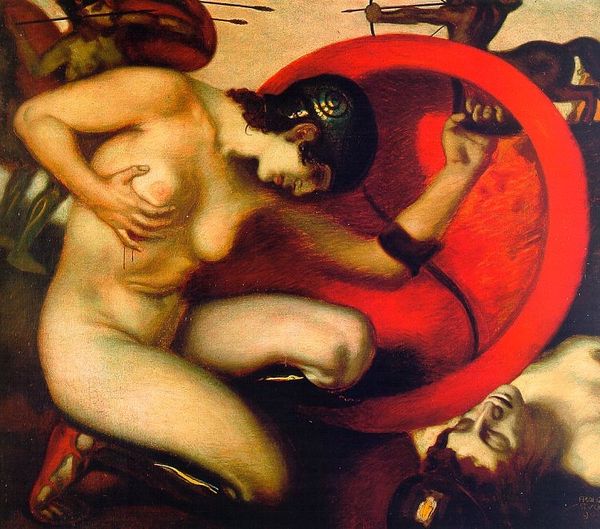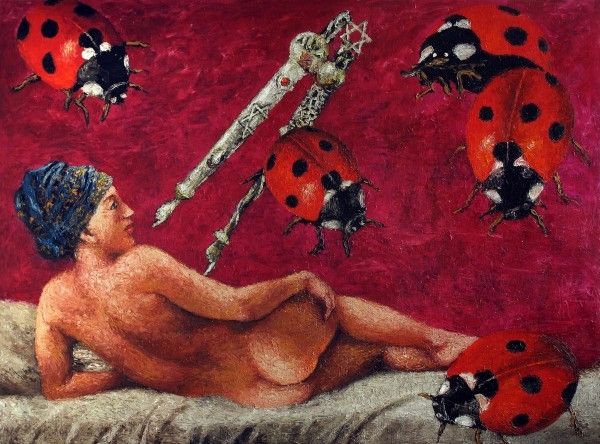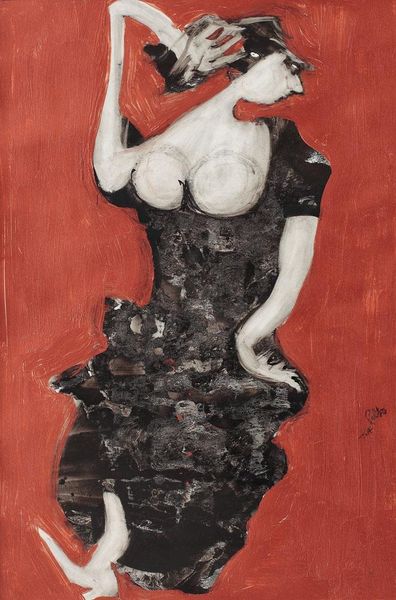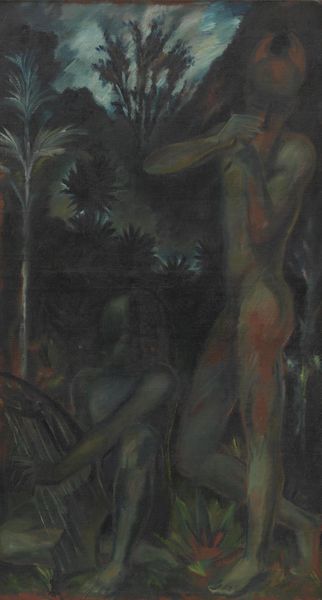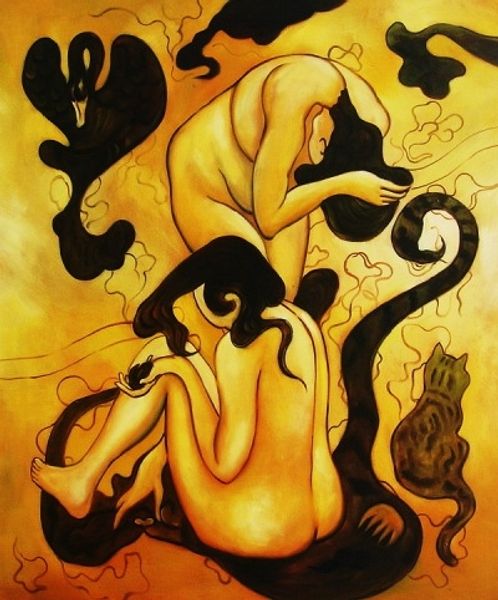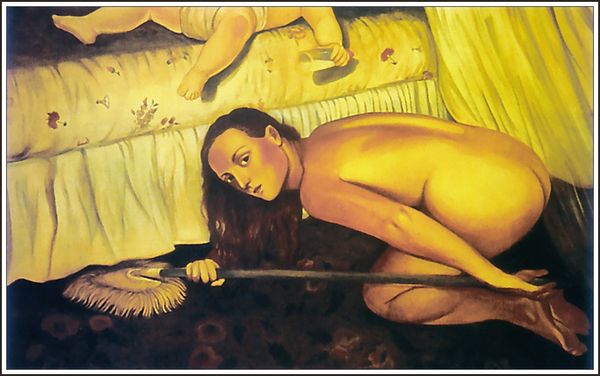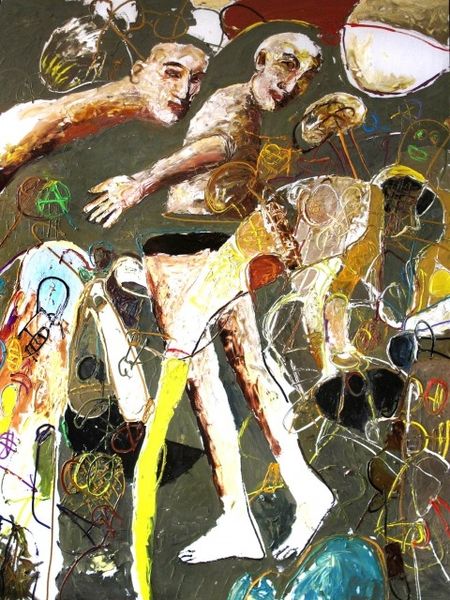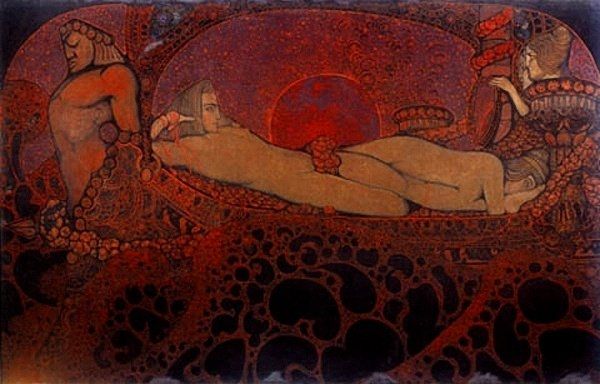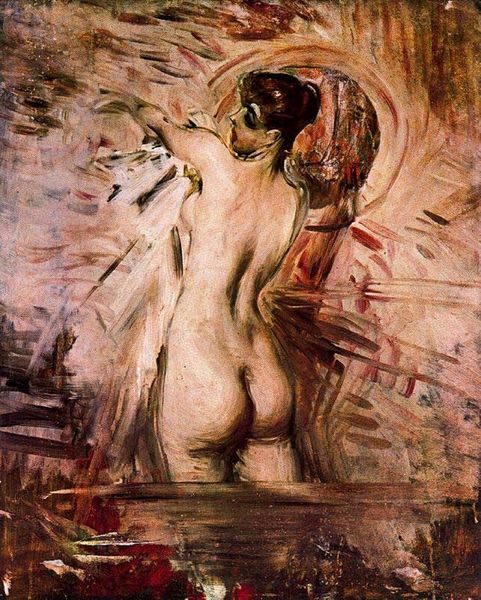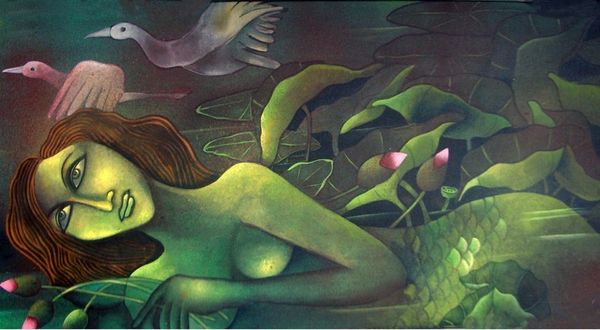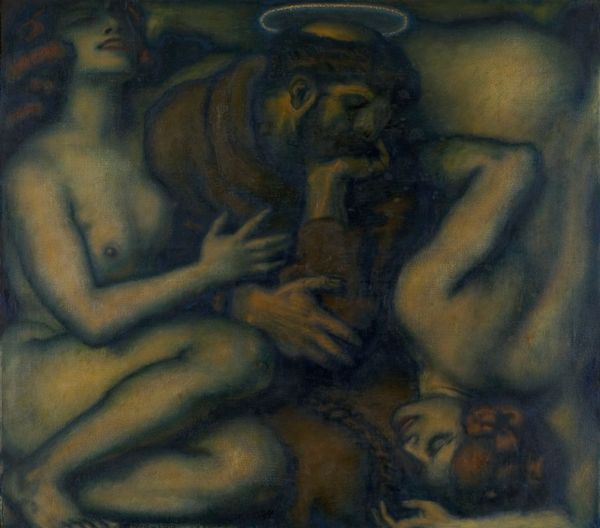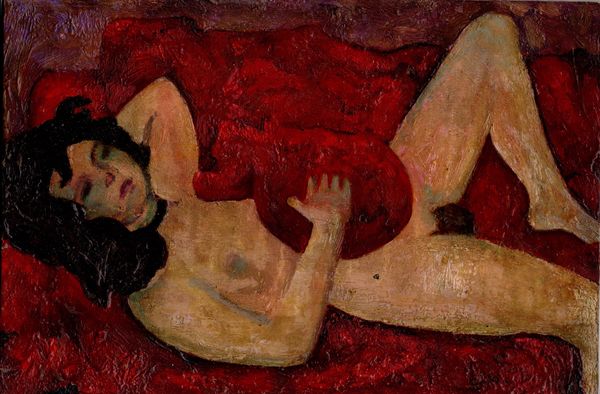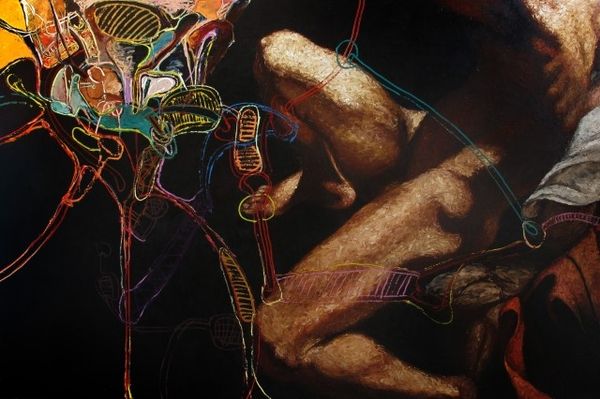
painting, oil-paint
portrait
painting
oil-paint
oil painting
neo expressionist
neo-expressionism
genre-painting
facial portrait
nude
portrait art
Copyright: Alexander Roitburd,Fair Use
Curator: Welcome. We are looking at Alexander Roitburd's 2013 oil painting, "Mistress and Maid." Editor: My initial impression is one of unease. The color palette is dominated by somber reds and browns, casting a strange, almost oppressive mood. And are those… giant insects? Curator: Indeed. Roitburd was a proponent of Neo-expressionism, and this painting is a strong example of his style: layered paint application, dreamlike subjects, a bold palette. Let’s first talk about how the texture creates contrast. The application of paint in areas creates the smooth skin texture for the standing woman. And contrast to this, the seated figure's skin, especially, seems rough. What do you see in it? Editor: The two female figures immediately evoke a classic master-servant or courtesan-attendant dynamic, yet twisted by those unsettling insects. Bugs historically symbolize mortality and corruption. The figures themselves don’t engage. Is this a critique of the power dynamics and mortality, where traditional roles are becoming increasingly blurred and claustrophobic? Also, one has a coffee grinder perched on her head; its symbolism is elusive but adds a contemporary twist. Curator: I agree about the figures' power dynamics; you pointed that out well. It also could speak to labor and privilege with coffee production dependent on enslaved labor historically. Shifting the attention again to brush strokes, note the differences in texture of skin. Editor: What is going on texturally there for sure. But let’s get back to those insectile forms and their potent symbolism—there’s menace there, I believe. They loom almost as watchful eyes, witnesses to…what exactly? Female existence, changing social dynamics, shifting standards of art? Are they emblems of voyeurism or creeping dread, cultural decay? Curator: Perhaps the decay stems from those exact social and economical pressures between class structures; something Roitburd perhaps wants to explore formally with impasto-filled paint layers and rough mark making as opposed to smoothing out areas where he renders the form smoothly. What I find equally important here is how it speaks to painting itself. The tension is there—in this strange scene between these women, but formally, it all speaks to neo-expressionist sensibilities where we are working towards a new and bold way of capturing and engaging with the history of painting. Editor: I think your attention to form and composition does point to the intention of creating an entry to painting practice in itself. A statement of art practice through the history of portraits. I came into it thinking more about narrative, and am shifting towards the intention of Roitburd on portrait and history. Curator: So in the end, an uncomfortable narrative told through an uncomfortable yet exciting style is how this painting stands to us, a formal exercise through the history of portrait painting? Editor: I think that perfectly sums it up.
Comments
No comments
Be the first to comment and join the conversation on the ultimate creative platform.
